
Michael Jordan of the Chicago Bulls in Game 1 of the NBA Finals against the Seattle SuperSonics at the United Center in Chicago, Illinois, June 5, 1996. /VCG
Michael Jordan of the Chicago Bulls in Game 1 of the NBA Finals against the Seattle SuperSonics at the United Center in Chicago, Illinois, June 5, 1996. /VCG
Here's the squad Jerry Krause and Phil Jackson prepared for Jordan before the 1995-96 season: 32-year-old, 1.98-meter-tall Ron Harper, 30-year-old, 2.01-meter Scottie Pippen, 34-year-old, 2.03-meter Dennis Rodman, 27-year-old, 2.18-meter Luc Longley, 27-year-old, 2.11-meter Toni Kukoc, 30-year-old, 1.91-meter Steve Kerr.
Including 32-year-old Jordan himself and other bench players, the team's average was 29.9 years old and their starting-lineup was 31 on average. Their center was a giant, but the two forwards were at best average with two tall guards.
Despite that they had Jordan and Pippen, the Bulls did not seem like a champion team, at least that's what the rest of the league thought.
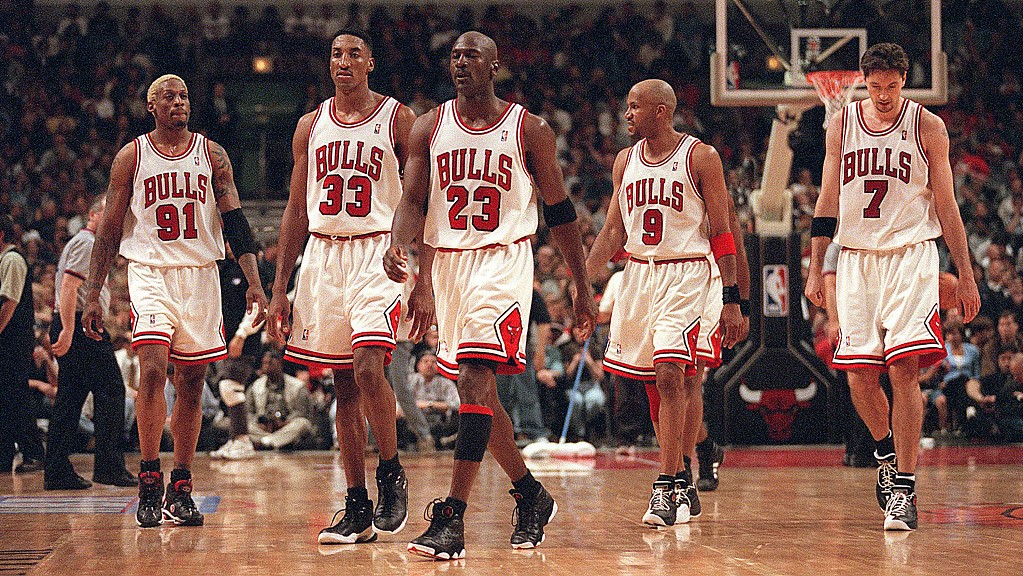
From L to R: Dennis Rodman, Scottie Pippen, Michael Jordan, Roy Harper and Toni Kukoc of the Chciago Bulls in the game, April 24, 1996. /VCG
From L to R: Dennis Rodman, Scottie Pippen, Michael Jordan, Roy Harper and Toni Kukoc of the Chciago Bulls in the game, April 24, 1996. /VCG
They realized they were wrong on February 2, 1996 when the Bulls claimed their 18 straight wins to get a 41-3 record.
How did they do it? Well, some owe the success to the triangle offense, or the fact that Jordan finally accepted it. Besides, Rodman was a perfect piece in this complicated system. However, Chicago's most lethal weapon was their defense.
Mostly it happened in the third quarter. The opponents' orchestrator approached the 3-point line with the ball, Harper, Jordan or Pippen lured him to the wing and suddenly, he was double teamed by the two of Pippen, Jordan or Rodman. He lost the ball, Chicago launched fast break to score two easy points, After this scenario repeated itself several times, the game was long gone.
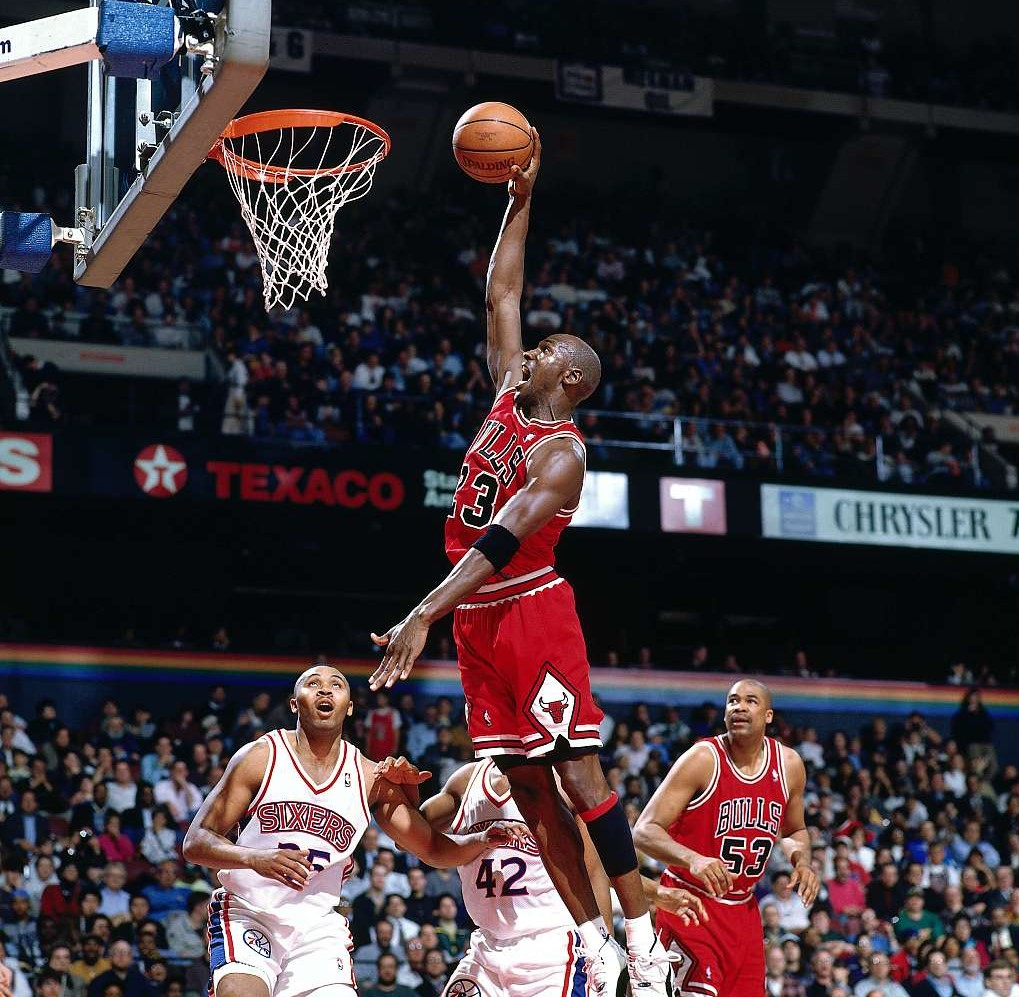
Michael Jordan #23 of the Chicago Bulls dunks in the game against the Philadelphia 76ers at the First Union Spectrum in Philadelphia, Pennsylvania, March 18, 1996. /VCG
Michael Jordan #23 of the Chicago Bulls dunks in the game against the Philadelphia 76ers at the First Union Spectrum in Philadelphia, Pennsylvania, March 18, 1996. /VCG
Why was it always the third quarter? Like we said, the Bulls were old. Even if they do the trick in the first quarter and lead by 20 points, the young blood still has three quarters for counter strike. Nonetheless, if the opponents enter the last quarter trailing by double digit, the chance of them coming back was already too small.
Of course there were exceptions from time to time. For example, on November 30, 1995, the Vancouver Grizzlies found they were still the leading side in the fourth quarter. The team's guard Darrick Martin made a jumper to expand the lead to eight points. Then he went to the Bulls' bench, declaring their victory in advance.
Jordan heard it, he stood up, returned to the court. Scored nine points in a row – in fact, he got 19 in the last half quarter. In the last 10 seconds, Jordan stole the ball and finished a dunk to seal the game, 94-88, Chicago won. That was also a good lesson for Martin to remember that there are consequences if he exchanges trash talks with the wrong people.
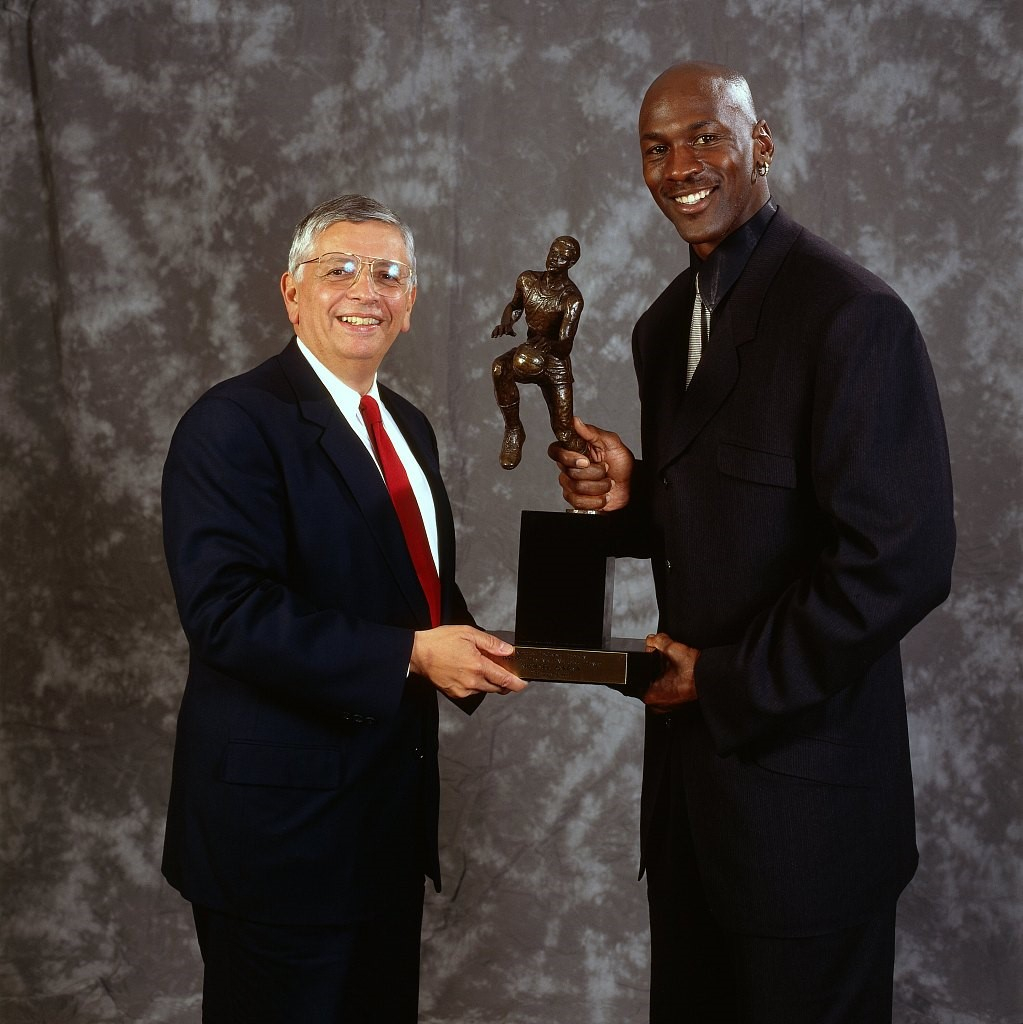
Michael Jordan (R) of the Chicago Bulls and NBA Commissioner David Stern hold the NBA Most Valuable Player trophy for photo at the United Center, May 20, 1996. /VCG
Michael Jordan (R) of the Chicago Bulls and NBA Commissioner David Stern hold the NBA Most Valuable Player trophy for photo at the United Center, May 20, 1996. /VCG
That was the Bulls in the 1995-96 season, Their defense could destroy most of the opponents and, when it could not, Jordan would stand out and take over.
On April 16, the Bulls defeated the Milwaukee Bucks 96-80 and became the first 70-win team in NBA history. Five days later, they finished the regular season 72-10. The team led the league in both offense and defense. Jordan played all 82 games and dropped 30.4 points per game, which earned him the eighth scoring champion, and received his fourth NBA MVP trophy. He and Pippen both made the All-NBA First team. They also met Rodman in the All-Defensive First Team. Kukoc was named the Sixth Man of the Year. Jackson was the Head Coach of the Year. Even Krause became General Manger of the Year.
The Bulls met the Miami Heat, the New York Knicks and the Orlando Magic in the Eastern Conference playoffs. The scores of the three series were 3-0, 4-1 and 4-0, respectively. Pat Riley, Tim Hardaway, Patrick Ewing, John Starks, Anthony Hardaway, Shaquille O'Neal, none of them could stop the Bulls.
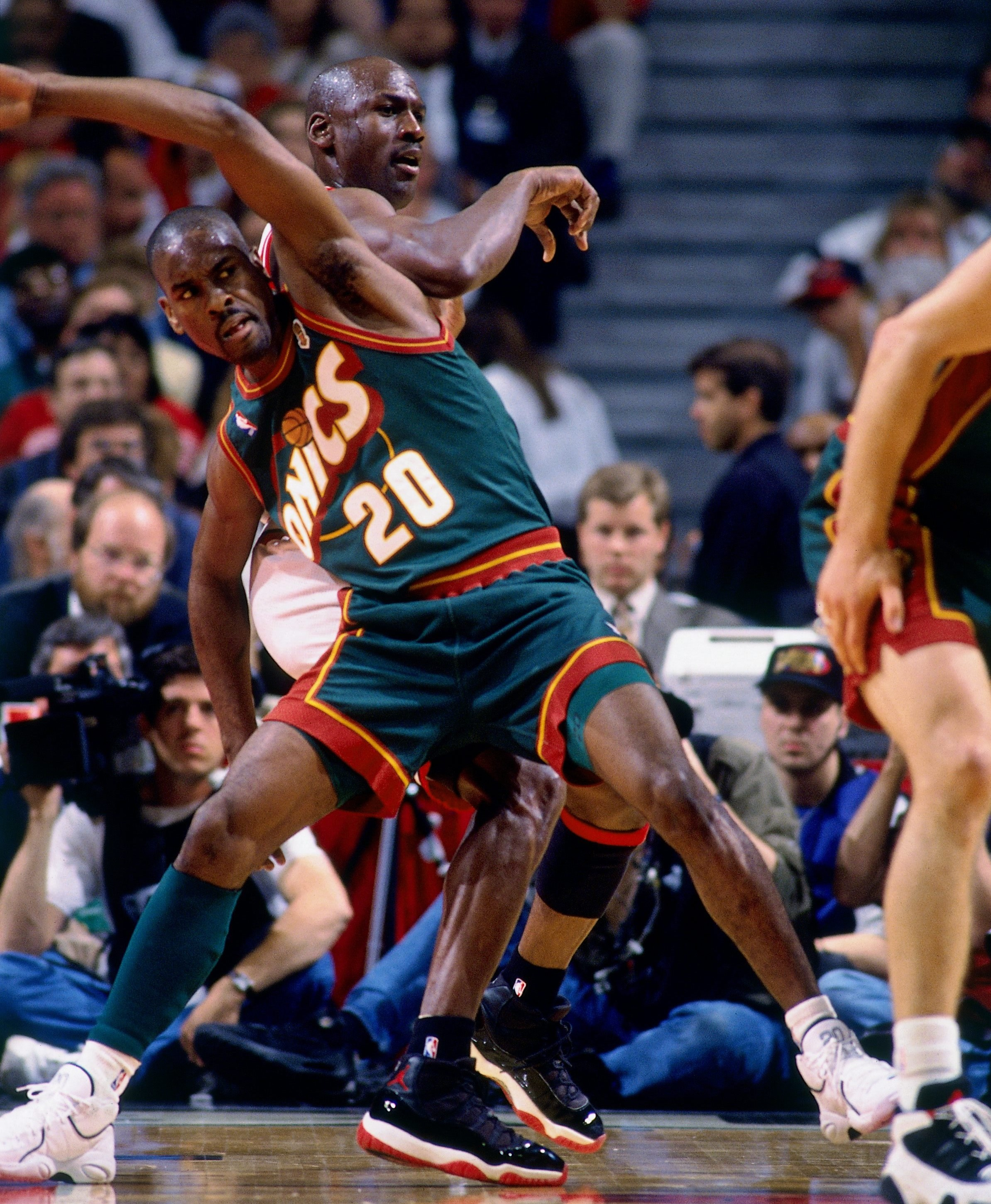
Gary Payton #20 of the Seattle SuperSonics defends Michael Jordan of the Chciago Bulls in Game 6 of the NBA Finals at the United Center, June 16, 1996. /VCG
Gary Payton #20 of the Seattle SuperSonics defends Michael Jordan of the Chciago Bulls in Game 6 of the NBA Finals at the United Center, June 16, 1996. /VCG
The Eastern champions were about to meet the Seattle SuperSonics in the Finals. They had the league's second-best defense, a 64-18 record, one of the most explosive power forward in NBA history Shawn Kemp and the Defensive Player of the Year Gary Payton.
The first three games were nightmares for the SuperSonics. Their German forward Frank Brickowski was tricked by Rodman before he was ejected by the referee; Kukoc kept piercing their defense with straight 3-pointers; Rodman somehow was always able to steal key offensive rebounds; Payton locked by Harper and his long arms.
More importantly, the SuperSonics could not stop Jordan. Hersey Hawkins was not fast enough to follow him; the big-man squad that the team were proud of tried to double team Jordan but they could not do it unless someone slowed him down.
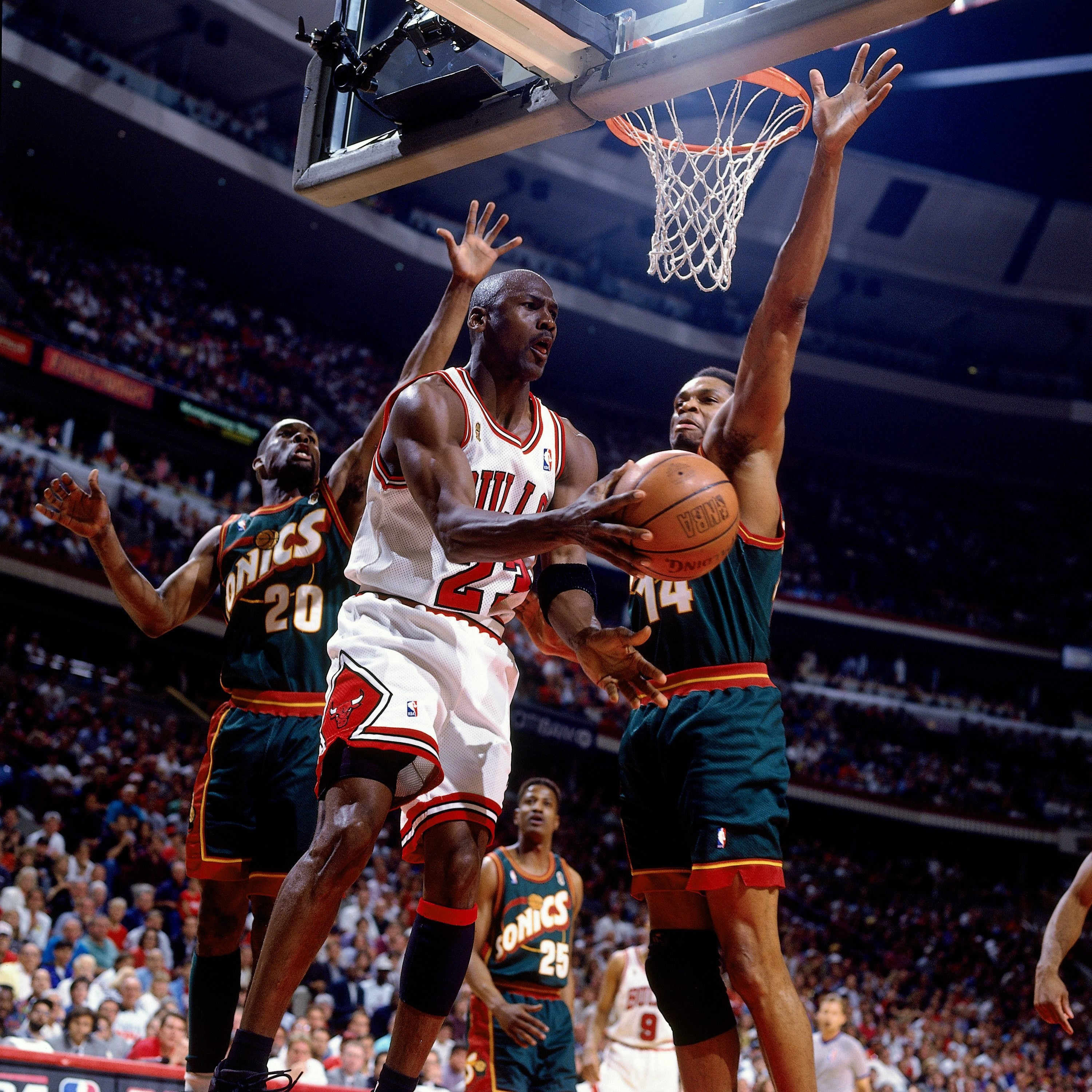
Michael Jordan #23 of the Chicago Bulls deals with the ball in Game 6 of the NBA Finals against the Seattle SuperSonics at the United Center, June 16, 1996. /VCG
Michael Jordan #23 of the Chicago Bulls deals with the ball in Game 6 of the NBA Finals against the Seattle SuperSonics at the United Center, June 16, 1996. /VCG
Therefore, coach Karl asked Payton to defend Jordan. They already trailed 3-0 and thus had nothing to lose.
Like we have said before, no one could stop Jordan by himself – it's a team mission. Seattle had enough big men to torture Hakeem Olajuwon in defense, but Payton was the lethal poison applied on their dagger. As a 1.93-meter-tall pint guard, he could keep Jordan from penetrating in the front. Payton had first-class posting up moves himself, which enabled him to read Jordan's mind when tried the same trick. Furthermore, he was one of the few who could stand Jordan's trash talk – Payton himself was probably the most vicious player in the league.
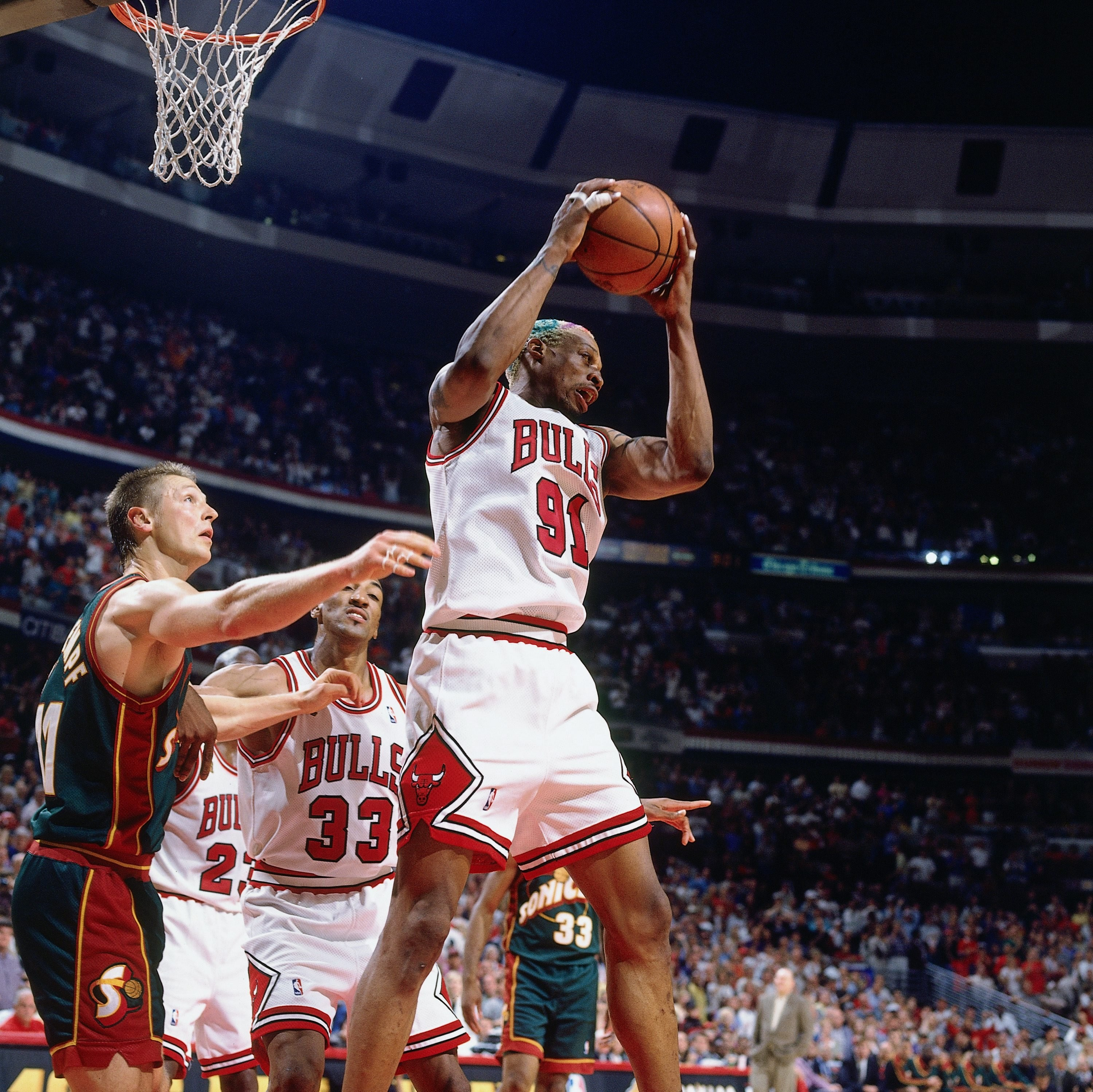
Dennis Rodman #91 of the Chciago Bulls grabs a rebound in Game 6 of the NBA Finals against the Seattle SuperSonics at the United Center, June 16, 1996. /VCG
Dennis Rodman #91 of the Chciago Bulls grabs a rebound in Game 6 of the NBA Finals against the Seattle SuperSonics at the United Center, June 16, 1996. /VCG
From Game 4, Payton almost stayed by Jordan's side every minute they were on the court. He denied the ball, he flopped, he pulled Jordan's jersey – anything possible to make it hard for Jordan to get the ball. Meanwhile, Seattle's forwards would suddenly join to trap Jordan and never hesitated to commit a foul.
In offense, Payton continued to assault Chicago's perimeter defense with his speed while assisting Kemp to lash the opponents' rim. Such tactics worked immediately. Jordan earned and made a lot of free throws, but he always had to face two to three defenders when he wanted to shoot. Meanwhile, his teammates failed to stand out, just like they could not stop Payton and Kemp in defense. 3-2, Seattle won two games back.
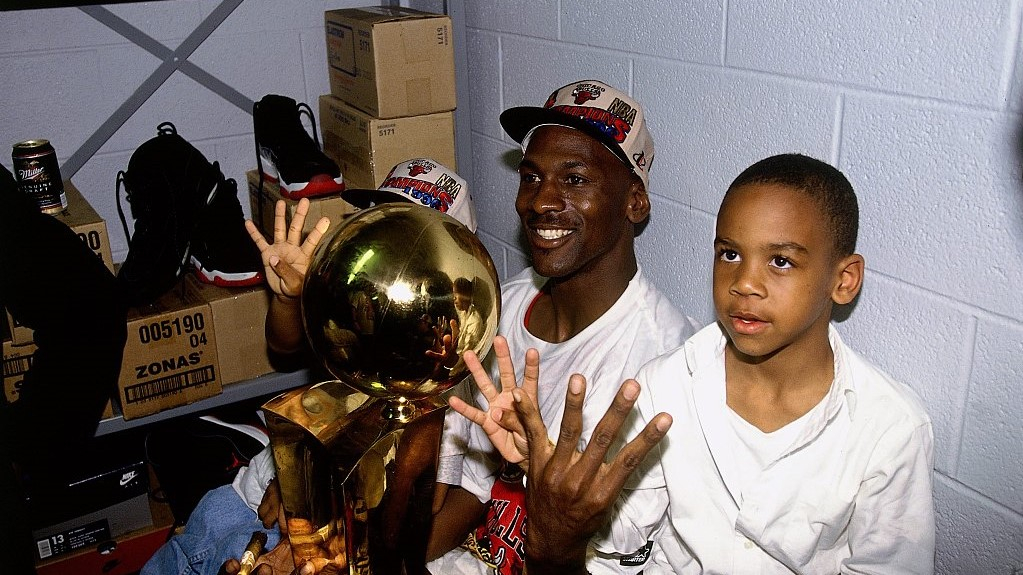
Michael Jordan (C) of the Chicago Bulls celebrates with the Larry O'Brien NBA Championship Trophy after defeating the Seattle SuperSonics 87-75 in Game 6 of the Finals at the United Center, June 16, 1996. /VCG
Michael Jordan (C) of the Chicago Bulls celebrates with the Larry O'Brien NBA Championship Trophy after defeating the Seattle SuperSonics 87-75 in Game 6 of the Finals at the United Center, June 16, 1996. /VCG
Fortunately, the Bulls found their defense back in Game 6. They only allowed 38 points by the SuperSonics at a field goal rate of 36 percent in the first half. Moreover, Rodman became the game-changer. While Jordan went 5-19 in front of the annoy defense, Rodman grabbed 19 rebounds – 11 on the offensive glass, seven in the last quarter.
87-75, the Bulls won the Finals 4-2. Jordan claimed his fourth NBA champions. He was about to shock the league in that summer with two events. The first was a movie and the second was a number.